The proliferation of electronic devices and advanced software has created an enormous demand for well-designed apps for businesses and individuals.
However, you also have plenty of competition if you’re developing an app. To stand out, the idea alone won’t be enough. You need to execute that idea effectively.
That’s where project management for app development comes in.
Below, we’ll explore some of the top project management frameworks for developing applications. Then, we’ll go over some reasons to invest in a project management platform and features you should look for in that platform.
What is application development?
An application is a software program that carries out a specific function separate from operating the computer itself.
The word “app” often refers to a mobile iOS or Android app today. However, any piece of software that fits the above description is an application.
In general, apps are either off-the-shelf or custom. Off-the-shelf apps are those you might see in the Apple or Google Play stores — these mobile applications are built for the masses to download and use.
On the other hand, a custom application is designed for one client with specific goals and needs. If your company is developing a one-off enterprise app for a large company, that’s a piece of custom software.
There are some other types of apps, such as:
- Legacy applications: a legacy application is a term for a software solution that’s obsolete. This usually refers to an existing application a company has.
- Native applications: a native application is an app designed specifically for certain operating systems. Most people are referring to a mobile device when they talk about native apps, but desktop applications can also be native.
- Enterprise applications: enterprise applications are designed for large-scale organizations, such as big businesses or the government.
- Web applications: a web application runs on a web server instead of locally on an operating system.
Application development is the process of designing, building, and implementing one of these software programs or sets of programs for any type of device.
Numerous software development methodologies exist to guide your app development team from initial idea to final product. We’ll discuss a few of the best ones in a minute.
The same basic stages generally apply across these models. The order of those stages may differ, though.
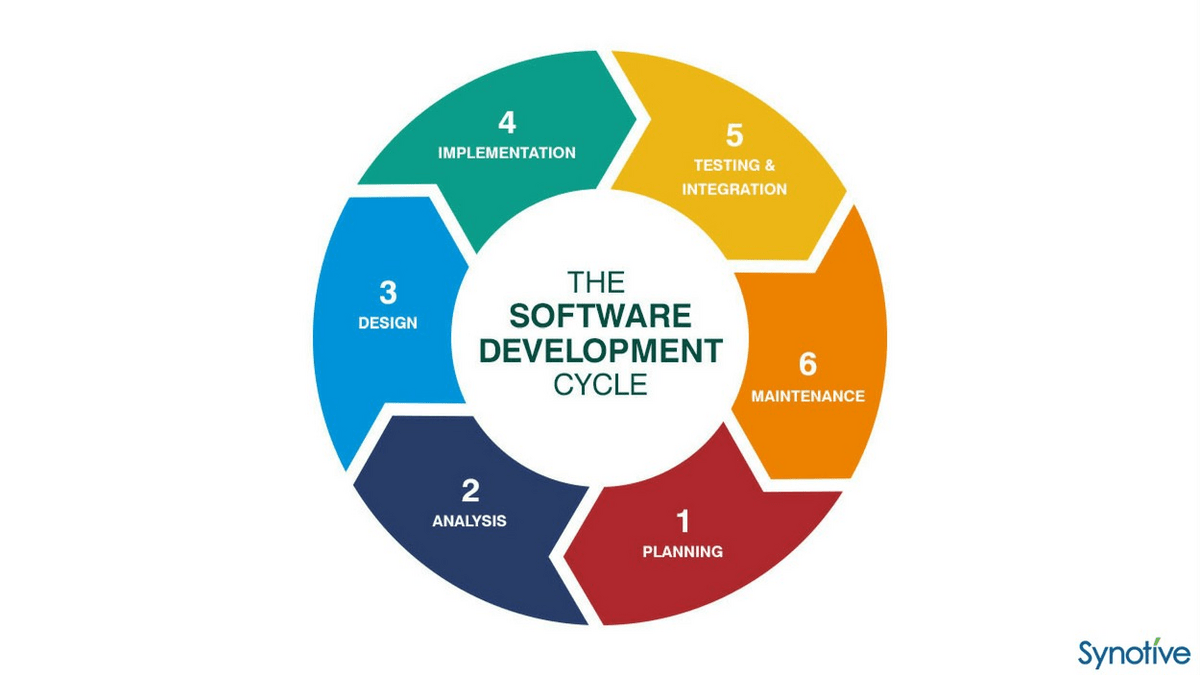
How to choose a development methodology: some top options
Picking a suitable methodology is crucial to successful software project management. Web app development companies can benefit from choosing a suitable development methodology based on factors such as project size, requirements, team experience, customer feedback, and expected change requests.
When you’re browsing, consider these factors:
- Project size and requirements
- Expected end product
- Team experience with methodology
- Customer and employee feedback
- Expected change requests
- Delay costs
Below are some of your top options for methodologies. Make sure to weigh each one using the factors listed above.
Agile
Agile isn’t exactly a methodology. It’s more of a philosophy focused on rapid iteration and gathering and implementing customer feedback.
Several project management frameworks — including some in this article — fall under the Agile philosophy.
Many software firms are adopting Agile models because of the unique nature of software projects. The flexibility to gather customer feedback and make changes is a must for a less tangible and more complex product, such as software.

Scrum
Scrum is an Agile framework that standardizes some of Agile’s collaboration emphasis.
Koblenz University of Applied Sciences conducted a survey that found that this methodology is the most popular Agile framework at the team level.
Scrum involves building a product roadmap and backlog of features needed, then planning and initiating 1–4 week sprints to build those features in concentrated bursts of work.
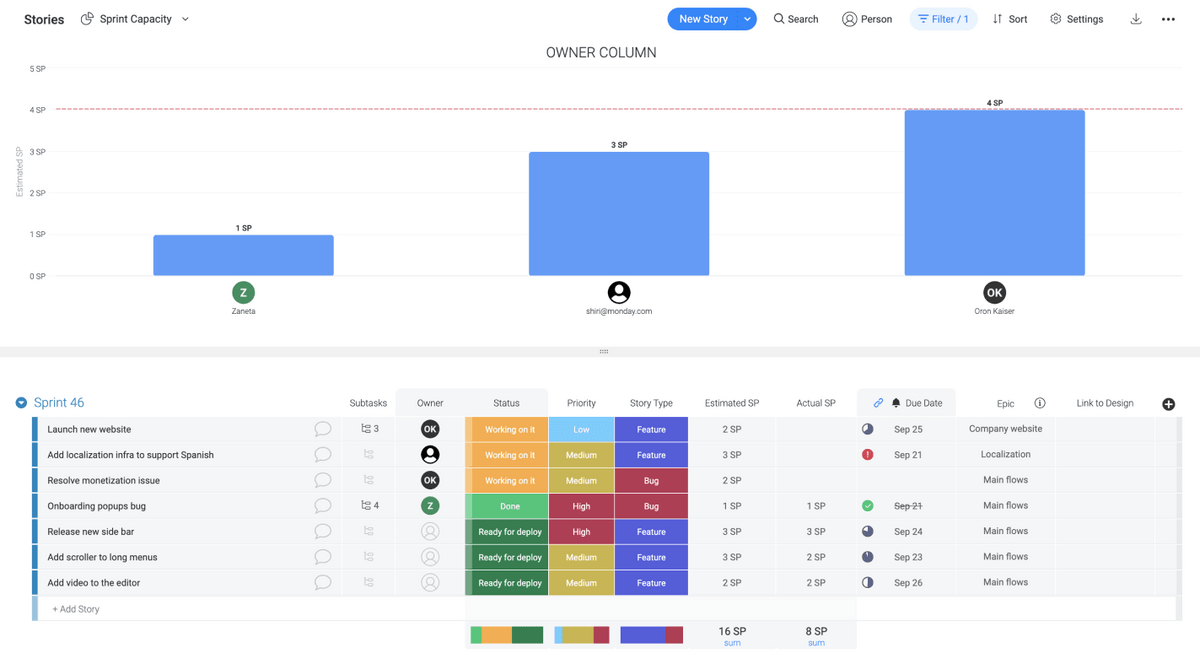
Scrum also consists of many meetings to check on progress, share new ideas, identify and remove roadblocks, and more. Here are a few types of those meetings:
- Daily scrum meetings
- Sprint reviews
- Sprint retrospectives
Lean
Lean is yet another Agile model aiming to cut all waste and optimize efficiency to deliver products fast on a minimal budget. It comes from the manufacturing world — Toyota invented Lean in the 1950s.
Lean’s primary focus is delivering value to the customer.
It cuts anything from the development process that doesn’t achieve this aim. Consequently, costs and time consumed stay low under Lean, making it easier for the team to continue adding value to existing applications while developing new ones.
You can see Lean reflect this in its 5 principles:

The key to succeeding with Lean is managing resources and toeing the line between being too lean and not lean enough.
Thus, a skilled and disciplined software development team can deliver great applications with the Lean methodology.
Rapid Application Development
Rapid Application Development focuses on creating a prototype quickly and cost-efficiently while repeatedly gathering customer feedback to improve the design.
Like Agile, rapid iteration is essential in this framework.
However, RAD develops the whole working app prototype first instead of each feature one at a time.
RAD can save time and lead to a better app thanks to customer feedback integration. However, it requires skilled and disciplined developers and is only suitable for systems that can be modularized.

4 reasons to use project management software when developing your app
Now you know a few of the leading app development methodologies companies are using.
But let’s go a step further.
Project management software can offer you plenty of benefits when developing an app. Keep reading to learn some of the top advantages of investing in one of these solutions.
1. Improves collaboration
Software projects require plenty of communication and as few barriers as possible to effective collaboration.
Streamlined communication and collaboration are especially vital in Agile project management frameworks since ideation and iteration become much harder without these.
Project management platforms facilitate communication and collaboration — especially when cloud-based — by offering a place for teammates to share and manage files, leave notes on items, send messages to other devs, and more.
Here’s an example of some collaboration features inside monday.com:
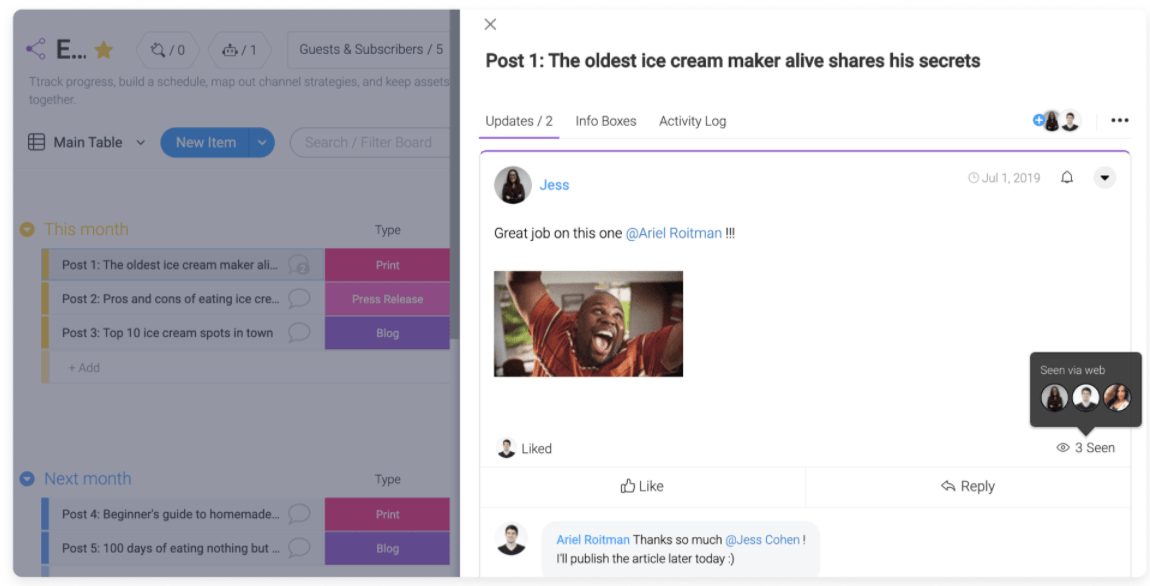
2. Enhances productivity
Maximizing productivity is always a good goal — but under models like Lean, it’s the holy grail.
Lean is all about cutting the waste and getting the most out of every resource you have.
Other Agile models also seek to minimize waste and make work more efficient and effective, too.
Project management software enhances productivity thanks to the wide range of features it comes with. Automations alone can save an untold number of cumulative hours.
Project management applications also come with plenty of task management tools. These help delegate tasks to the right people so that everyone is working on what they’re best at.
Team members can also clarify their duties by simply logging into the software. More clarity and transparency lead to more productivity.
3. Streamlines resource management
Resource management is vital to any app development project under any methodology — but teams following Agile frameworks like Lean need to be passionate about this.That’s where a solid project management tool comes in handy. It’ll offer you visibility into where you allocate your resources. Similarly, it’ll help you see bottlenecks and other areas where things slow down so you can put more resources into those areas.
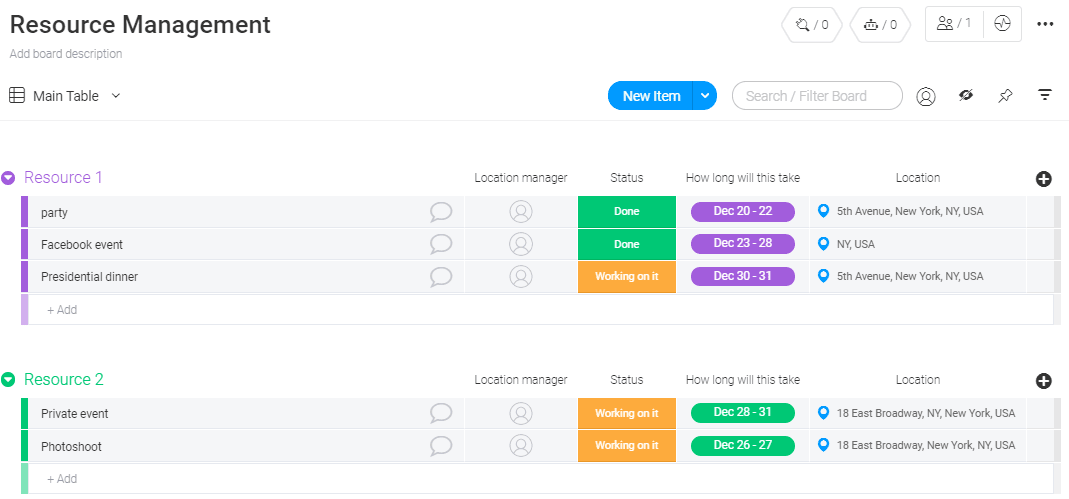
4. Helps improve future work
Project management applications help you store and access data on past projects.
You can then use reporting and analytics to see what went well and what could use some improvements.
Other team members can access these as well to inform their work.
For example, if you follow an Agile methodology like Scrum, your sprint retrospective lets you analyze how the sprint went and if there are ways you could improve.
This monday.com Sprint Retrospective template can centralize your retrospective findings and suggestions for future sprints:
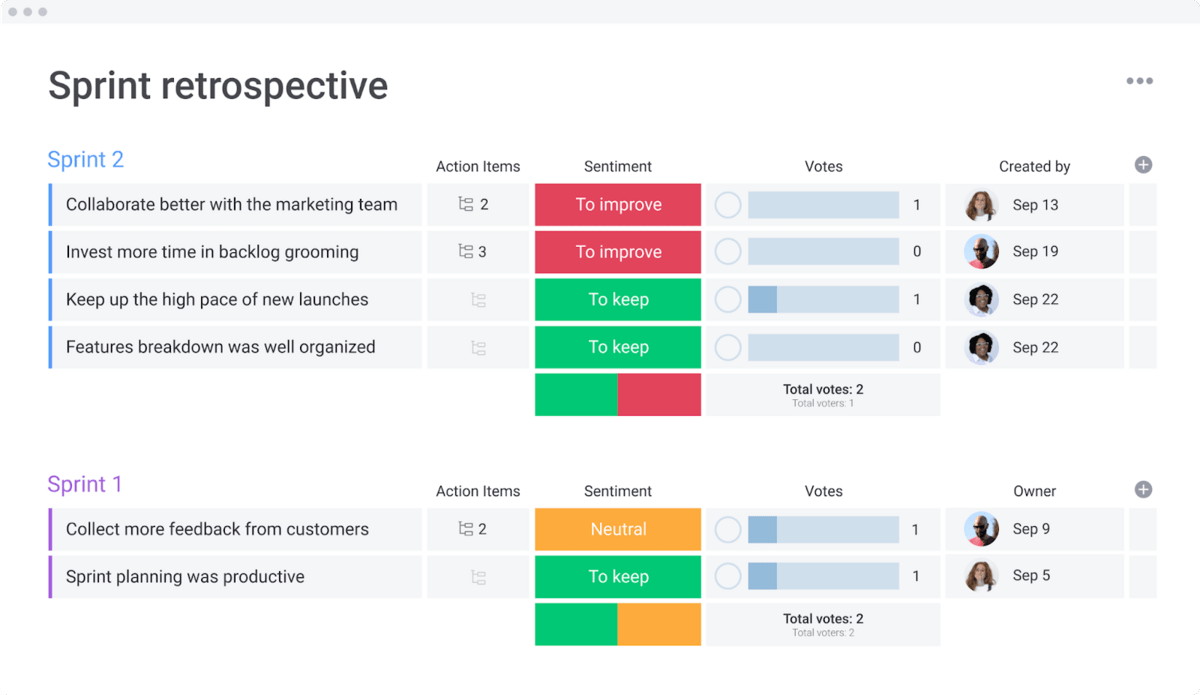
5 things to look for in your app development project management platform
Regardless of what methodology you use, you also need to pick a suitable project management platform.
There’s a lot to consider — project management platforms can come with plenty of features and can do a lot.
Prioritize the following items in your hunt for an app development project management platform.
1. Low-code or no-code app development
What if your project management platform let you build your app right in it?
Being a Work OS, monday.com’s low-code and no-code app development tools let you build custom applications from scratch, even if you’re clueless about coding.
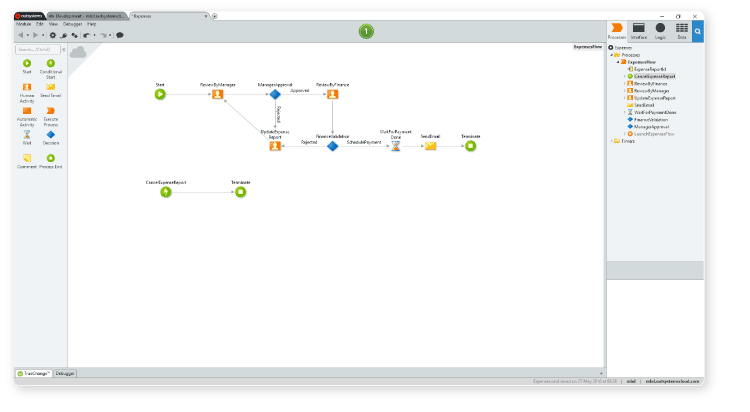
You don’t need to be a skilled developer if you’re not building a completely customized app — just drag and drop different custom building blocks, and you can pump out apps fast.
Alternatively, perhaps you’re building a more complex app. You can build apps in support of developing your actual product and integrate these apps alongside your workflows.

2. Automations
Tedious manual tasks waste the dev team’s time and harm their productivity as they switch between important development work and these repetitive tasks.
Your chosen project management application should offer plenty of workflow automations so devs can stay focused on designing and building the app.
For example, monday.com comes pre-loaded with an extensive list of automation recipes — just plug in your parameters, and the automation will handle the rest.
Check out some automation recipes that could be used to streamline tasks in a monday.com Bugs Queue board:
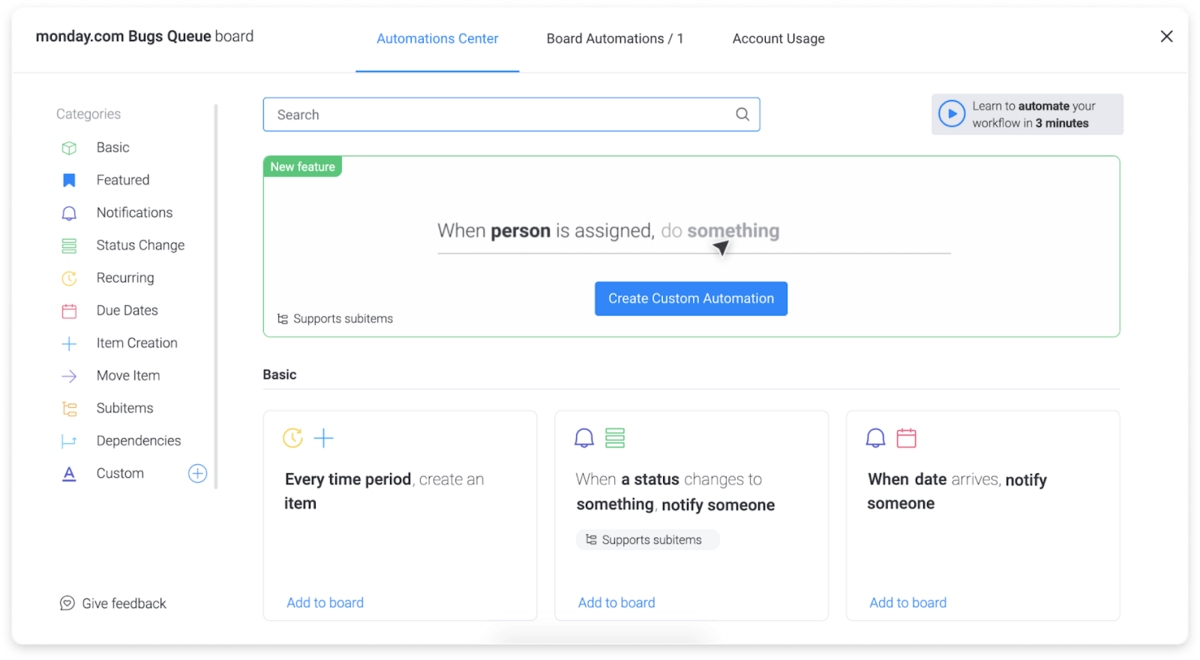
With these automations, you could, for example, automatically assign a dev to look into a bug the moment someone enters that bug into your Bugs Queue.
Then, you can set an automation to notify you if they move it along the process in your monday.com board. No more flipping between productive work and making sure bugs are addressed promptly.
3. Collaboration features
It’s simple: you can’t make a good software application without smooth and efficient collaboration among your team.
They must be able to share ideas, reduce ambiguity, and help each other on certain parts of the project when necessary.
Consequently, you want to make sure you pick a project management application that comes loaded with collaboration tools and makes using them as straightforward as possible.
Take, for example, this whiteboard app you can find inside monday.com:
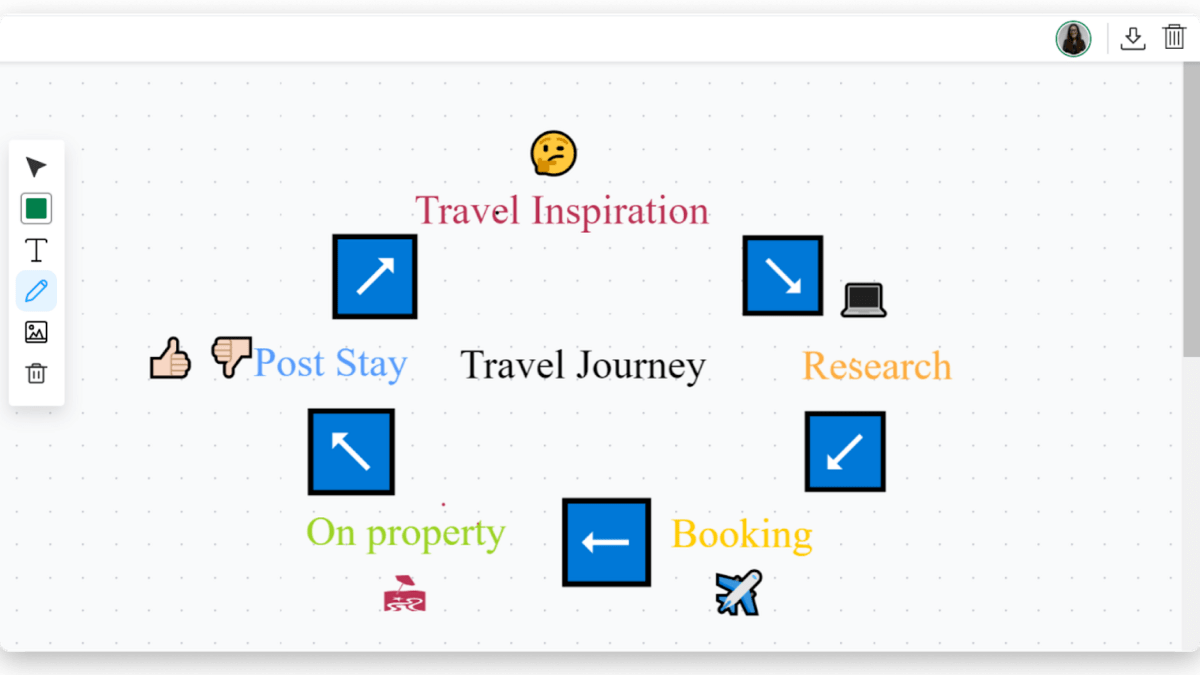
This is a cloud-based whiteboard inside your virtual workspace that makes it easier than ever for devs to brainstorm and share ideas, whether they’re in the same room or working remotely.
Fun fact: this whiteboard app was built using monday.com’s low-code features, too. Something to consider if the app you’re making is a workflow app.
4. Time-tracking tools
Given the prevalence of Agile frameworks in the software industry, keeping track of time is essential to meeting sprint deadlines and delivering products on time.
It’s also worth noting that burnout is an often-discussed problem in tech. Good time management can certainly help with this.
This is why a project management app with time-tracking functionality is a must.
In monday.com, you can add a time-tracking widget to your board:

After adding the widget, you’ll find a time-tracking column where you start, stop, and view tracked time while staying on your board.
You can see this column on the far right of the below image:

5. Integrations with other business solutions
Project management isn’t the only function you need a software platform for. You likely already have several business solutions that may or may not be connected to each other.
One way to tie everything together nicely and streamline your workflows is to get a project management platform that can integrate with all of them.
monday.com integrates with plenty of top business solutions in various areas, from CRM platforms to video call software and more.
Here are some of monday.com’s most popular integrations:
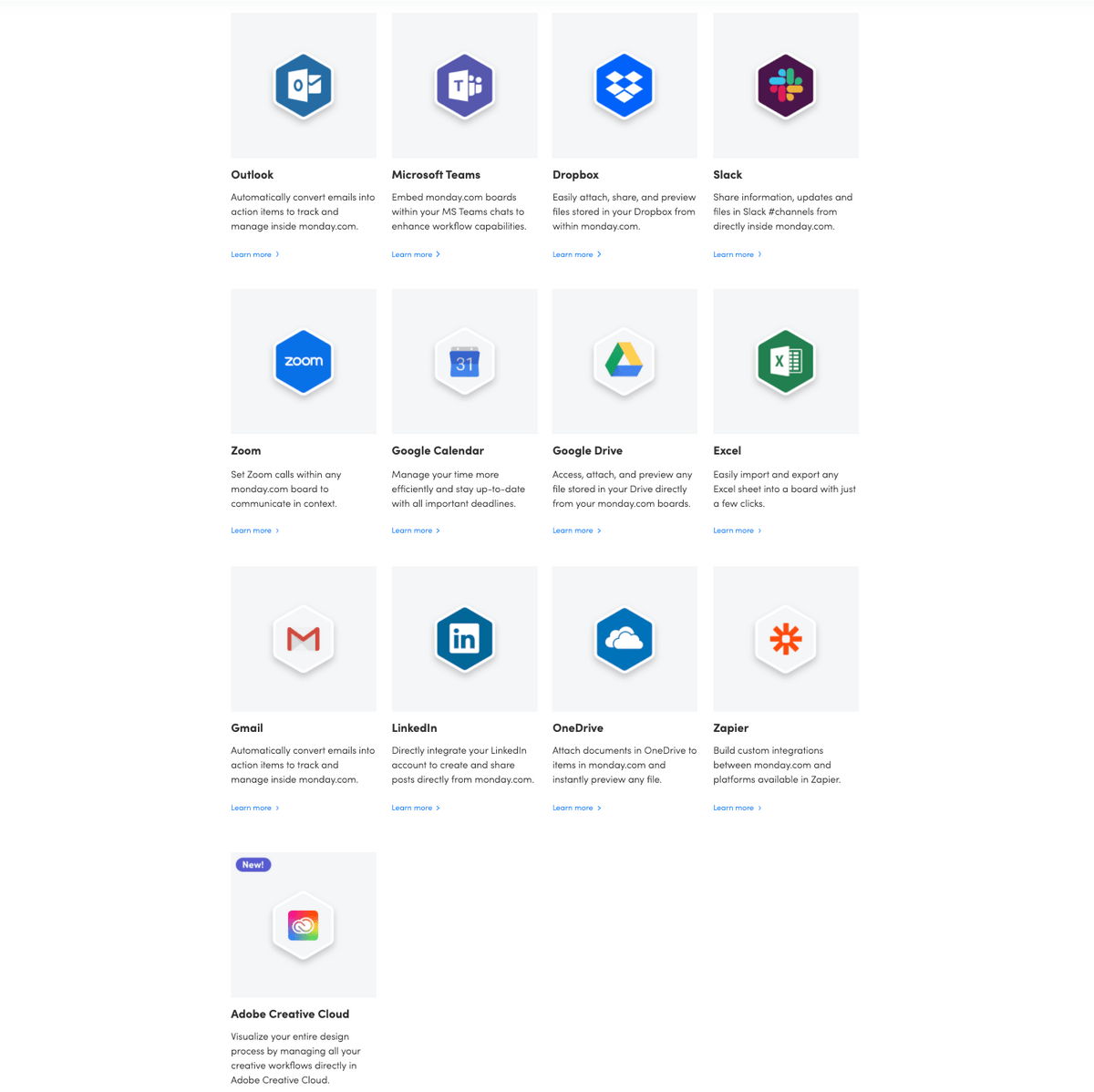
A good methodology + a Work OS = a fantastic application
Picking a suitable methodology for your team and effectively managing the project is key to delivering a functioning app that delights customers.
A project management platform plays a critical role — but only if you have the proper features.
Fortunately, you can skip the shopping around by getting a Work OS like monday.com. It has every feature you might need, and you can build your workflows from scratch.

